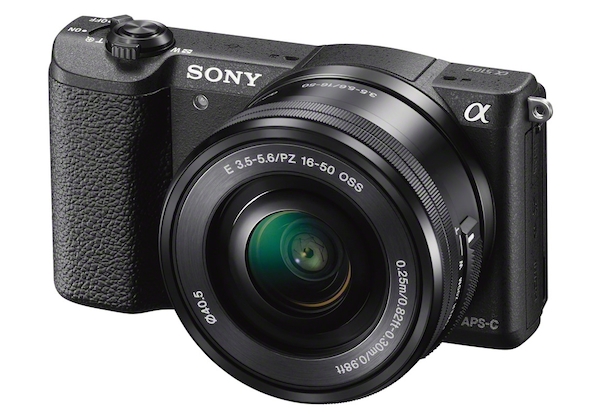Tom's Guide Verdict
Sony's a5100 entry-level mirrorless camera packs a DSLR-size sensor in a compact body, delivering high image-quality and fast shooting.
Pros
- +
Pocket-size design
- +
excellent low-light image quality
- +
fast, accurate autofocus
- +
smooth video
- +
built-in tutorials for novices
Cons
- -
Important settings buried in menus
- -
doesn't take external flash or microphone
- -
Wi-Fi not iOS friendly
Why you can trust Tom's Guide
Who it's for: Novices who want to develop advanced photo skills, or anyone who wants a good balance of image quality and portability.
Sony's a5100 is a scaled down version of the already petite Alpha a6000 mirrorless camera. It packs some of Sony's best tech: not only a large sensor, but also Sony's superfast phase-detection autofocus technology and powerful Bionz X processor. Sony's interface, while improving, is still clunky. But, overall, I recommend the a5100 to mirrorless camera shoppers, including those hungry to develop advanced photo skills.
Since the a5100 debuted, Sony has released a number of other compact mirrorless cameras. For beginners, we recommend you check out our Sony A6000 review, as well as our Sony A6100 review. We've compiled a guide to the best Sony mirrorless cameras, which compares the A5100, A6000, A6100, A6300, A6400, A6500, and A6600.
Design: So compact
The a5100 is compact enough to slip into a coat pocket, and it could squeeze into all but the smallest purses or handbags. The body measures just 4.3 x 2.5 x 1.4 inches, but the 14-ounce weight is noticeable. By comparison, the similarly priced NX300 is 4.8 x 2.5 x 1.6 inches and weighs 11.5 ounces.
MORE: The Best Mirrorless Cameras You Can Buy
The textured right-hand grip may require curling your fingers tighter than with a full-size camera. Still, it's better than what two smaller mirrorless cameras have to offer: The Nikon 1 (see review) and Samsung NX mini bodies are flat slabs with no handgrip. (The a5100's grip is comparable to the NX300's.)
A low-power flash pops up high from the front of the camera, directly over the lens, but it's the only flash you'll get. Sony left out its multi-interface shoe, which on its other cameras can support an add-on flash or microphone.
The 3-inch LCD tilts up 180 degrees for shooting selfies, but it doesn't tilt down (as the Sony a6000's does) to help with shots that require holding the camera overhead.
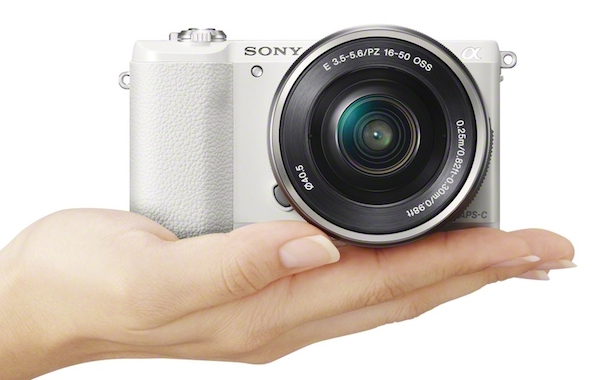
The a5100 lacks the crystal-clear OLED electronic viewfinder on the a6000. For that reason (and the shoe), you might prefer the pricier a6000 ($598 with 16-50mm lens) if you are switching over from a DSLR. If you're stepping up from a smartphone or point-and-shoot, the a5100 could be just right.
Interface: Obtuse
Sony's standard combination-four-way rocker and wheel allows you to select settings, such as light sensitivity (ISO), and then scroll through them. A rocker just above the handgrip (encircling the shutter button) allows you to shift the electronic zoom kit lens between wide and telephoto. You can also turn the ring or slide a switch on the left side of the lens to do the same. I wish that overabundance of controls carried over to other functions.
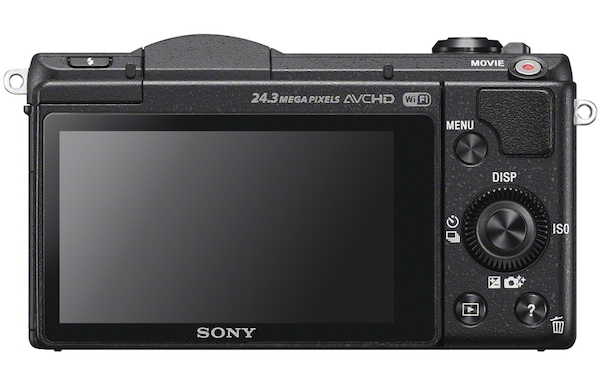
Sony includes the ability to reprogram the functions that nearly every button accesses. Customizing them allowed me to put some, but not all, of the most important options within easy reach.

I could get one-touch access to metering mode and focus area, for example, but would have to sacrifice one of them if I also wanted access to White Balance. Changing shooting mode, say, from Intelligent Auto to Shutter Priority required two buttons and three presses, since there is no mode dial.
A touch screen should make it a lot easier to access settings, but the a5100's screen is just a tease. It provides only two capabilities: tap to set focus or tap to focus and shoot. These are great features for action photography, and are sorely lacking on the a6000. But it's silly to limit the touch screen to just two functions when it could make up for the lack of physical controls.
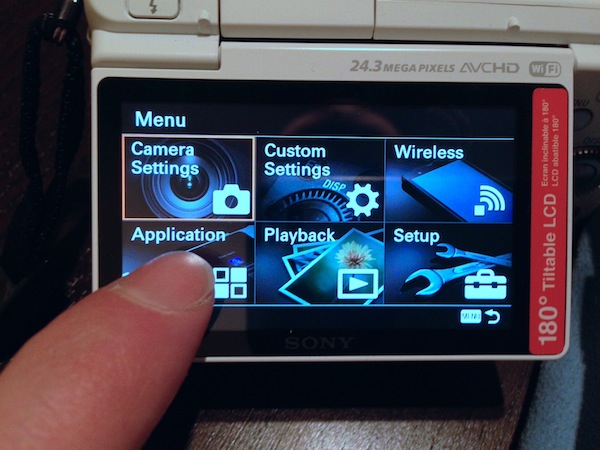
In-Camera Guide
One nice feature Sony provides for beginners is the In-Camera Guide, which you can access by pushing the button marked with a question mark on the back of the camera at the bottom right. This brings up tutorials with tips for portraits, landscape photos, night scenes, close-up macros and subjects in fast motion. (If you don't need easy access to the Guide, you can reprogram the button for another function, such as metering mode.)
For example, Sony's advice for capturing moving subjects is to set the shutter speed to 1/30 second or slower to get motion blur and to pan with the moving subject, such as a car. This keeps it sharp while the background blurs. Basic stuff, but a good start.
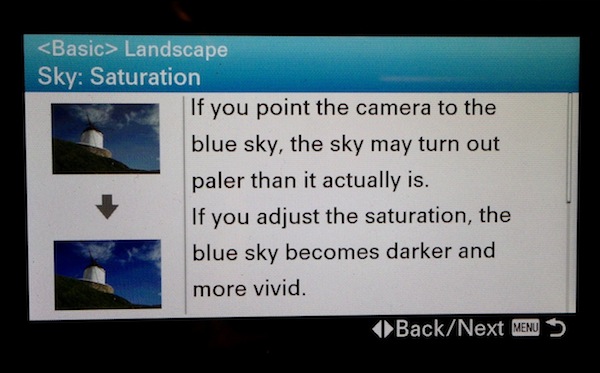
Image Quality
The a5100 is simpler but very similar to Sony's a6000, and it delivers similarly fine image-quality, especially in low light.
Color: true but subtle
The a5100 captures colors quite accurately, though that may not please everyone. A rooftop photo of my colleague John in the late afternoon sun looks a bit flat — although it's actually on target. You can tell by looking at his skin tone, which doesn't have the fake pink, orange or yellow cast that many cameras inflict.
(You can click on most of the sample photos below to enlarge them.)

Advanced photographers might appreciate this accuracy, especially since they usually touch up the RAW image files in a program such as Adobe Lightroom, but that's not the kind of shooter the a5100 is for.
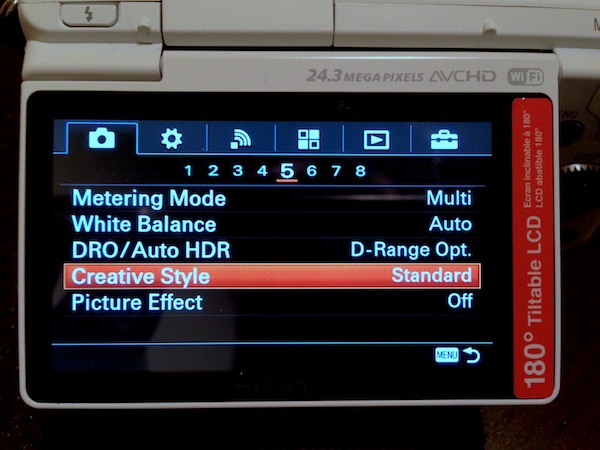
To get bright colors right out of the camera, as JPEGs, switch from the default Standard mode to Vivid mode under the Creative Style menu setting. Technically, Vivid is a tad oversaturated, but it generally looks nicer. (My test photos, however, are in Standard mode in order to test accuracy.)
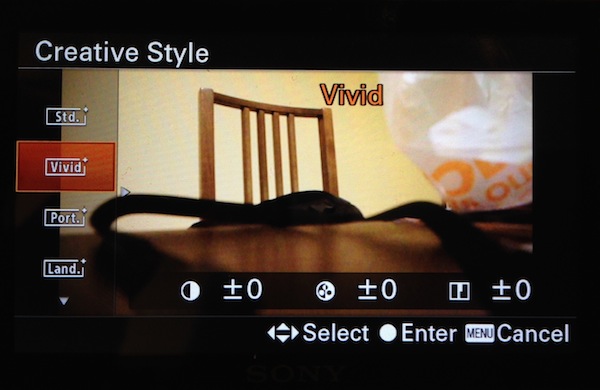
You can see the effect in these photos shot in Brooklyn's Crown Heights neighborhood on a cloudy day in Standard mode (left) and Vivid (right).

Exposure: good range by day
Sony cameras tend to keep images a skosh darker than rivals do, which is good for keeping skies and clouds from getting overexposed, as in this view looking up at the Flatiron building. Though much of the cloud content is clipped (rendered pure white), some texture remains, and bits of open sky between the clouds are a rich blue. Yet shadow details are also clear: Even the underside of the eaves isn't completely dark. This photo was taken in pattern-metering mode, which sets exposure based on the overall composition of the frame.
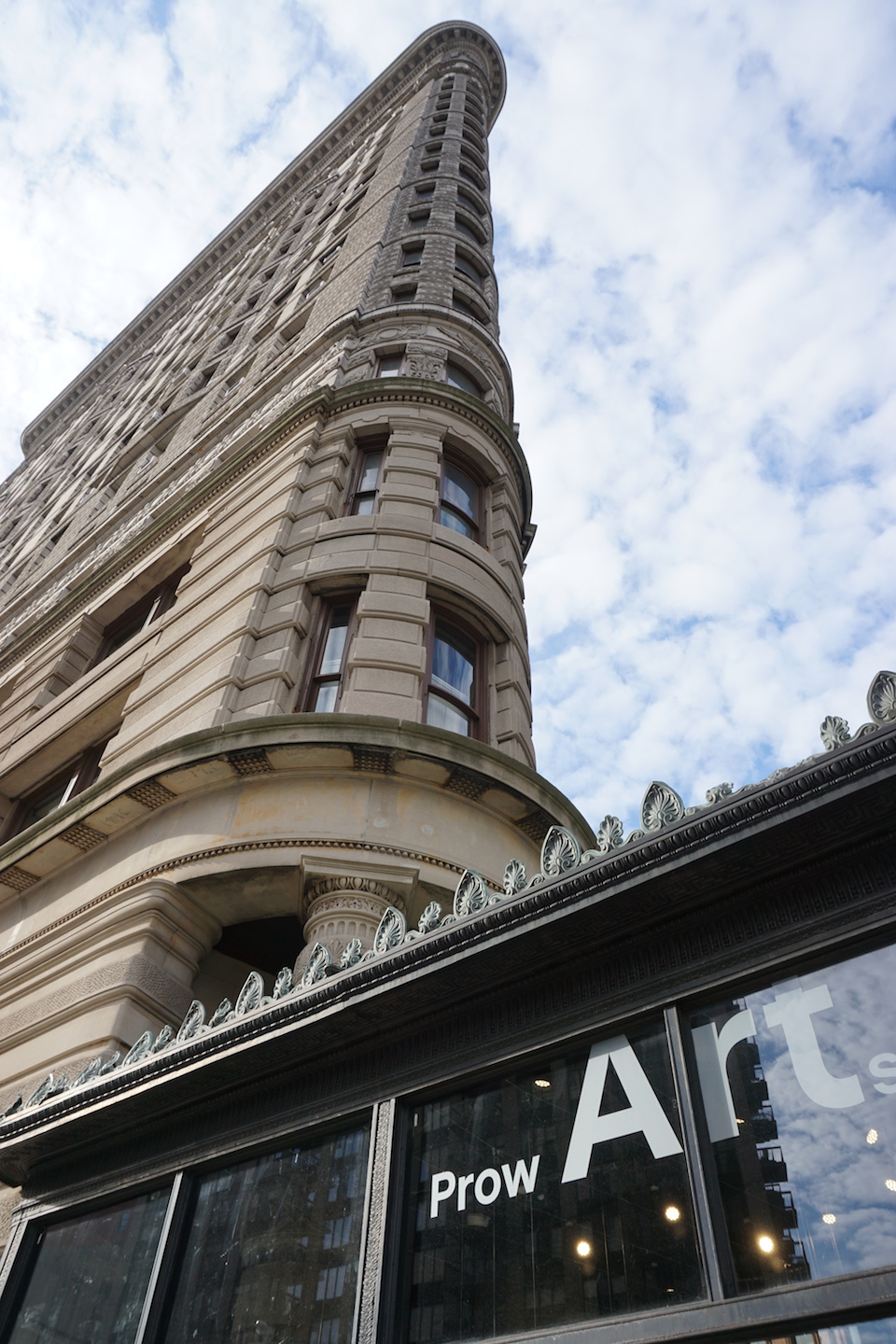
Detail: super sharp

The a5100 is quite capable of capturing fine detail, by day or night, even with the kit lens. In this portrait of a tie vendor at the Union Square holiday market in Manhattan, the a5100 captured every detail possible, as seen in the 100 percent crop around his eye, below. Though shot at a moderately high sensitivity of ISO 800, this image has virtually no grain, even at full size. (Since the crop is already at full size, you can't click to enlarge it.)


High ISO: the killer feature
The best attribute of the a5100 is its ability to shoot amazingly clean photos when set to high light-sensitivity. As cameras scrounge limited light, they inevitably show some graininess and lose some detail. What matters is how they handle such challenges. In producing JPEGs, the a5100 doesn't overdo the smoothing of image noise or blur details as many other cameras do. The Samsung NX300, for example, turns high-ISO photos into what look like watercolor paintings.
Up to about 50 percent size (which is huge for a 24.3MP photo), this picture shot at ISO 2000 shows virtually no grain — not just in the well-lit parts up front but even in the darker background. At 100 percent, the photo, though mottled in the background, still looks OK.

White balance: better than most
As with almost any camera, the a5100's auto white-balance works fine in sunshine or bright lights, but it's better than average in dim settings. I shot this photo of a breakdancing group under the miserable fluorescent light of the New York subway, yet the image has just a slight yellowish tint (look at the woman's neck). It's also pretty clean for a photo taken at ISO 4000.
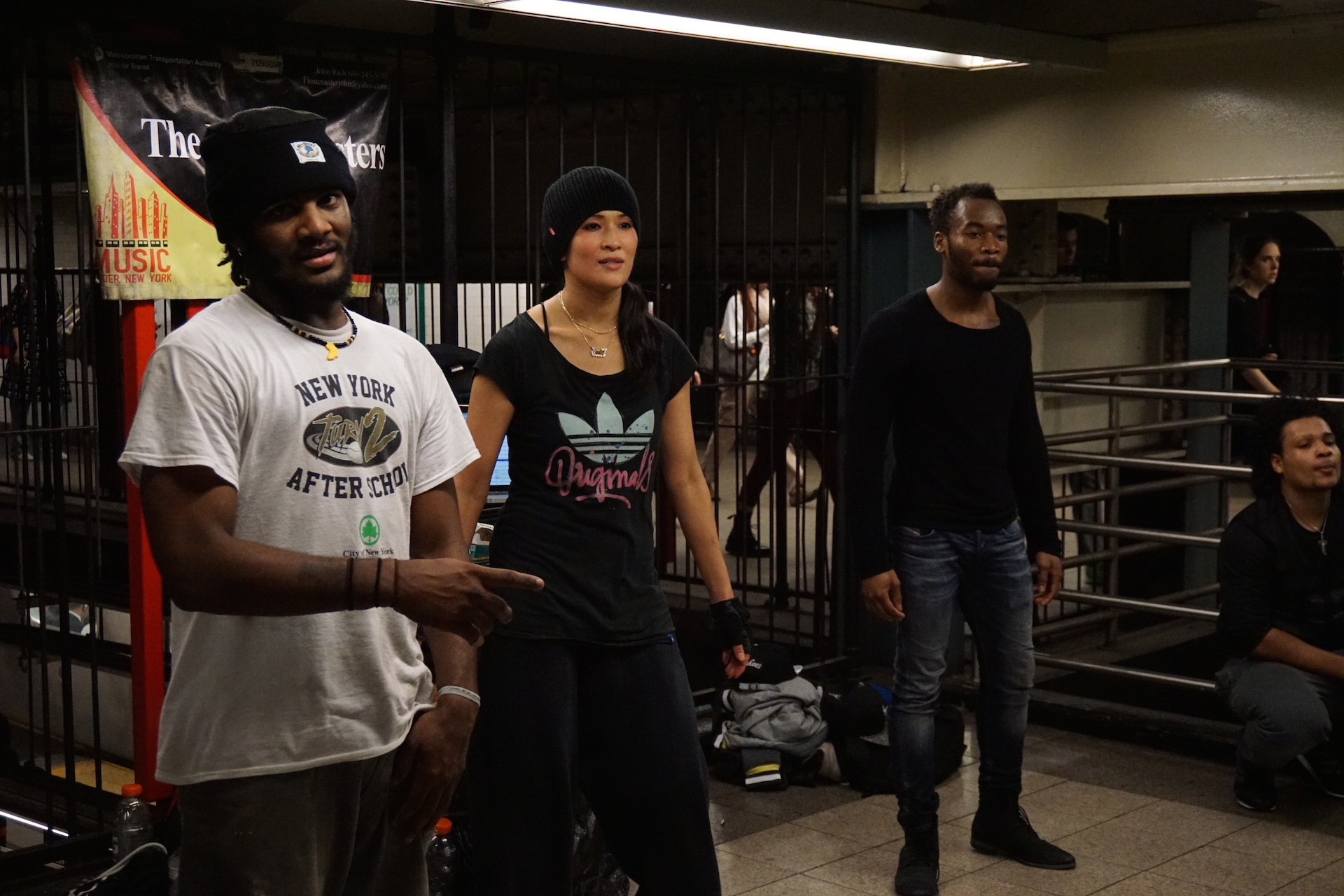
The a5100 does well outdoors at night, too, like in this candid of two women in Union Square. It's not a beautiful photo, given the slight blur from motion and the ISO 5000 setting, but the color is nearly spot-on despite the horrible lighting. I did not use flash for this.

Autofocus & Speed: Fast but finicky
Equipped with the phase-detection technology found in the a6000 (and DSLRs), the a5100 can focus quite fast. Many competing mirrorless cameras rely on the slower contrast-detection method (which the a5100 uses in concert with phase detection). However, the plain-vanilla form of Face Detection is set to off by default. Instead the camera is set to a mode for registering particular people's faces to detect — like family members. Change that to basic Face Detection (see screen, below) as soon as you get the camera. Without this adjustment, you'll end up with a lot of blurry people, as happened again and again with this (albeit challenging) photo of a woman at the holiday market.

Enabling face detection made a huge difference. Of all the details in this stall, below, the camera immediately locked onto the vendor, even though he's way in the corner.
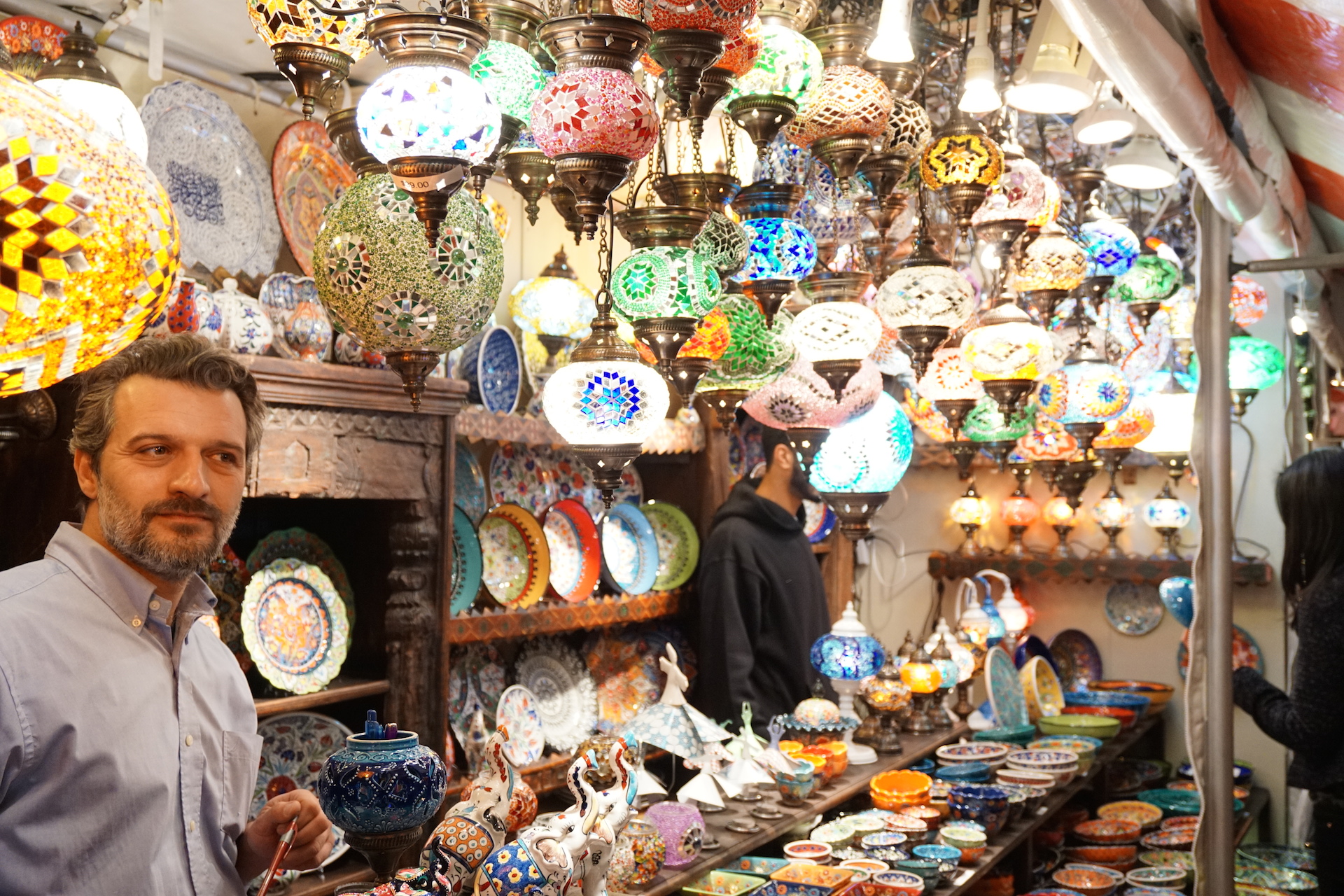
The a5100 can shoot at a brisk 6 fps (the a6000 does 11 fps), and it can shoot for a long time before slowing down: up to 75 JPEGs, 23 RAW files, or 22 simultaneous JPEG and RAW images. But that's often too fast for the autofocus. Shooting in burst mode, I got a few nice shots of the breakdancers, like the one below. There is some motion blur, of course, but check out the lettering on his T-shirt.
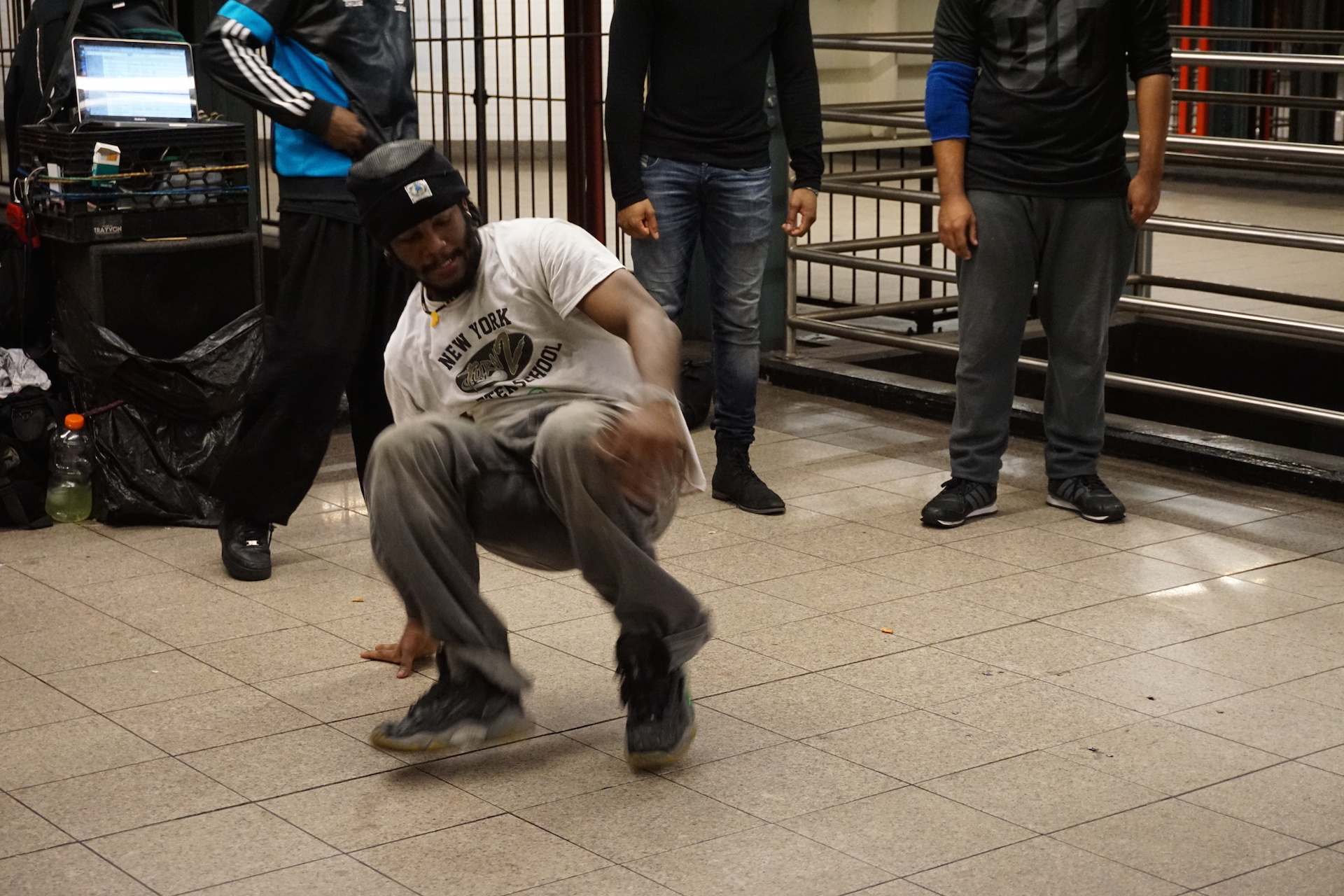
Most of the photos, however, came out way too blurry to use. If you like to shoot fast action, go for the a6000 instead.
Flash: Fine for fill
The a5100's flash range of 4 meters (called a guide number) is pretty wimpy: The a6000 goes to 6 meters. The rival Samsung NX300's included flash, which is detachable, has a guide number of 8.
These pop-up flashes aren't very good for illuminating a dark room. They are best for fill flash, putting a little light on, say, a face in shadow. The a5100's flash is fine for that, as you can see in this series of photos. In fact, I had to turn the flash down by 1.7 exposure values (1.7 EV, just over a quarter of its default strength) to keep my colleagues from turning into a red-eyed ghost.
Images – cropped and side-by-side



Video Quality: Ready for action
Like a bunch of Sony cameras we've reviewed this year, the a5100 shoots stellar video. I saw sharp detail and smooth motion, thanks to the 60fps max frame rate. The footage exhibited very little of the wobbly effect in action shots (known as shutter roll) that affects nearly all cameras not designed specifically for video — even ones costing three times as much.
Autofocus is especially strong, as you can see in this absolute torture-test movie of a band playing in the subway while people constantly walk past. Even after passersby mostly block the frame, the a5100 quickly snaps back onto the musicians. The audio is a bit hollow, but it's certainly fine for something like a YouTube video.
The a5100 also followed our breakdancing friends nicely, with smooth motion. It generally resisted the impulse to shift focus to the irrelevant "Downtown" sign in the back.
Battery life: At least as good as promised
With their image sensors and LCDs on so often, mirrorless cameras are no match for DSLRs on battery life, but the a5100 shoots longer than many competitors. Using the CIPA battery-testing standard, Sony claims the a5100 will last for approximately 400 photos or about 75 minutes of video (or some combination of the two).
I drained the battery to 2 percent after taking about 480 shots (most were simultaneous JPEG and RAW) and about 10 minutes of video. This should get you through an average day of shooting.
Lenses and Accessories: Not much
Lacking Sony's multi-interface shoe, the a5100 doesn't have access to significant add-ons, such as external flashes. The optional kit lens is surprisingly good: sharp, with minimal distortion. Although the electronic zoom might frustrate purists who like the feel of a manual zoom ring.

Sony offers a fair selection of 17 lenses for its mirrorless cameras, from a 16mm wide angle costing $250 to 28-135mm zoom for $2,500. Prices skew a bit high. For example, Sony's 35mm prime (nonzooming) lens goes for $400. Samsung sells a great 30mm prime (we've tested it) for $300. And the Samsung lens is an extra-thin "pancake" design — just the thing for an ultra-compact camera. Sony has only 16mm and 20mm pancake lenses, which are too wide to be the only lens you carry.
Sony has a fine selection of lenses, just no great deals. The best bargain is to get the a5100 with the 16-50mm, f-3.6-5.6 zoom kit lens. It adds $150 to the price of the camera, but purchased separately, it sells for $300.
Wireless Capabilities: Fine with Android
Sony cameras have been cantankerous with wireless connections to smartphones for transferring photos or taking remote control of the camera. It was a disappointing hassle with an iPhone. But that's the case with all cameras, because iOS doesn't make connections as easily as Android does.
After installing and starting up Sony's free PlayMemories app (for Android and iOS), you then start up sharing on the camera. The a5100 doesn't offer a dedicated Wi-Fi or Share button. Instead, you have to dig into the Wireless section of the main menu. The best scenario is with an Android phone sporting an NFC (near field communication) chip. A simple tap sets up the Wi-Fi connection between the phone and the camera. Otherwise, you have to enter the login info for the camera's hotspot (displayed on its LCD) manually. But you only have to do this once.
With an Android phone, it's easy to send either the particular photo you happen to be viewing on the camera to the phone, or to get a preview on your phone screen of all the photos from the camera. (I recommend the latter if you might want to transfer more than one photo.)

I was able to connect an iPhone 5 without too much trouble and transfer an individual photo. But I never succeeded in getting a preview of all the photos on my phone screen. Instead, I kept getting this sad message: "Failed to Get Status Information of the Camera."
Bottom Line
If the a51000 were a larger camera, I might ding it for the lack of features such as an accessory shoe or extra physical controls. But if that's the trade-off to get the camera so small, it's worthwhile for many people, especially novices who may not want to be overwhelmed by a big honking camera.
While the a5100 looks pretty simple on the outside, it's rich within. Fast autofocus, sharp images, faithful color, minimal graininess and rich video greatly boost your chances of capturing wonderful moments, whether anticipated or spontaneous. Yes, the controls can be a pain, but all the good aspects of the camera far outweigh those negatives, making the a5100 the best entry-level mirrorless camera right now.
Key Product Specs
Model: Sony Alpha ILCE a5100
Megapixels 24.3
Type: mirrorless
Price: $350 body only; $500 with 16-50mm, f-3.6-5.6 zoom kit lens
Shots per sec, max: 6fps
Sensor type APS-C
AF points and type(s): 179 phase-detection, 25 contrast-detection
Shutter speed range 1/4000-30 sec.
ISO range 100-25,600
Main video resolutions/frame rates: 1980 X 1080p at 60 fps, 24 fps
Video file format(s) XAVC S, AVCHD, MP4
Built-in flash: Yes
Hot shoe: No
Card type: single slot: SD/SDHC/SDXC
Ports: HDMI, USB,
Shots per charge (CIPA standard) 400
Video per charge (CIPA): 75 min.
Wireless capabilities: Wi-Fi, NFC
Image stabilization: kit and other lenses
Dimensions : 4.8 x 2.5 x 1.6 inches
Weight: 10 ounces (body only)
Sean Captain is a freelance technology and science writer, editor and photographer. At Tom's Guide, he has reviewed cameras, including most of Sony's Alpha A6000-series mirrorless cameras, as well as other photography-related content. He has also written for Fast Company, The New York Times, The Wall Street Journal, and Wired.
